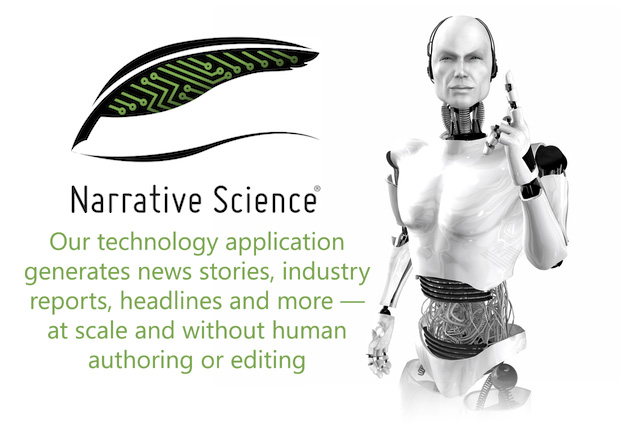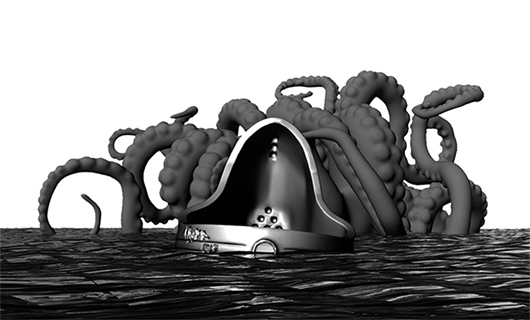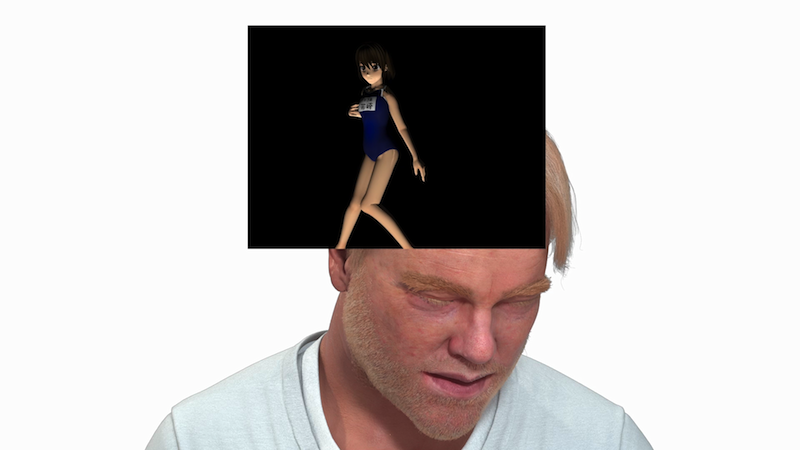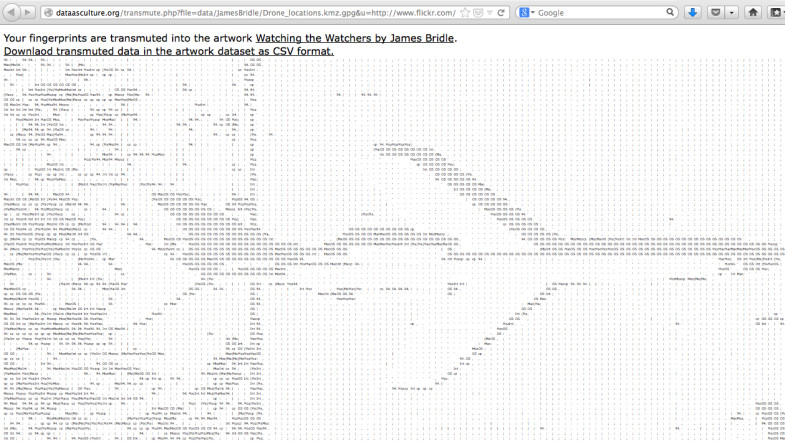Algorithmic Narratives and Synthetic Subjects
This was the paper I delivered at The Theorizing the Web Conference, New York, 18th April 2015.
I urge you to track down the other, superb, papers on my panel by Natalie Kane, Solon Barocas, and Nick Seaver.
You can view a video of (some of) the panel here.
I posted this up just after Facebook published a study into how their algorithms effect the stories users see (and vice versa). Wired used the surprise UK election result to talk about the study. Commentators took issue to media misunderstanding and misrepresentation of the study. The furore is well worth considering before/after you read my paper (which is now in dire need of an update).
Data churning algorithms are integral to our social and economic networks. Rather than replace humans these programs are built to work with us, allowing the distinct strengths of human and computational intelligences to coalesce. As we are submerged into the era of ‘big data’, these systems have become more and more common, concentrating every terrabyte of raw data into meaningful arrangements more easily digestible by high-level human reasoning.
 A company calling themselves ‘Narrative Science’, based in Chicago, have established a profitable business model based on this relationship. Their slogan, ‘Tell the Stories Hidden in Your Data’, [1] is aimed at companies drowning in spreadsheets of cold information: a promise that Narrative Science can ‘humanise’ their databases with very little human input. Kristian Hammond, Chief Technology Officer of the company, claims that within 15 years over 90% of all news stories will also be written by algorithms. [2] But rather than replacing the jobs that human journalists now undertake, Hammond claims the vast majority of their ‘robonews’ output will report on data currently not covered by traditional news outlets. One family-friendly example of this is the coverage of little-league baseball games. Very few news organisations have the resources, or desire, to hire a swathe of human journalists to write-up every little-league game. Instead, Narrative Science offer leagues, parents and their children a miniature summary of each game gleaned from match statistics uploaded by diligent little league attendees, and then written up by Narrative Science in a variety of journalistic styles.
A company calling themselves ‘Narrative Science’, based in Chicago, have established a profitable business model based on this relationship. Their slogan, ‘Tell the Stories Hidden in Your Data’, [1] is aimed at companies drowning in spreadsheets of cold information: a promise that Narrative Science can ‘humanise’ their databases with very little human input. Kristian Hammond, Chief Technology Officer of the company, claims that within 15 years over 90% of all news stories will also be written by algorithms. [2] But rather than replacing the jobs that human journalists now undertake, Hammond claims the vast majority of their ‘robonews’ output will report on data currently not covered by traditional news outlets. One family-friendly example of this is the coverage of little-league baseball games. Very few news organisations have the resources, or desire, to hire a swathe of human journalists to write-up every little-league game. Instead, Narrative Science offer leagues, parents and their children a miniature summary of each game gleaned from match statistics uploaded by diligent little league attendees, and then written up by Narrative Science in a variety of journalistic styles.
In their book ‘Big Data’ from 2013, Oxford University Professor of internet governance Viktor Mayer-Schönberger, and ‘data editor’ of The Economist, Kenneth Cukier, tell us excitedly about another data aggregation company, Prismatic, who:
…rank content from the web on the basis of text analysis, user preferences, social network-popularity, and big-data analysis. [3]
According to Mayer- Schönberger and Cukier this makes Prismatic able ‘to tell the world what it ought to pay attention to better than the editors of the New York Times’. [4] A situation, Steven Poole reminds us, we can little argue with so long as we agree that popularity underlies everything that is culturally valuable.
Data is now the lifeblood of technocapitalism. A vast endless influx of information flowing in from the growing universe of networked and internet connected devices. As many of the papers at Theorizing the Web attest, our environment is more and more founded by systems whose job it is to mediate our relationship with this data.
Technocapitalism still appears to respond to Jean Francois Lyotard’s formulation of Postmodernity: that whether something is true has less relevance, than whether it is useful. In 1973 Jean Francois Lyotard described the Postmodern Condition as a change in “the status of knowledge” brought about by new forms of techno-scienctific and techno-economic organisation. If a student could be taught effectively by a machine, rather than by another human, then the most important thing we could give the next generation was what he called, “elementary training in informatics and telematics.” In other words, as long as our students are computer literate “pedagogy would not necessarily suffer”. [5]
The next passage – where Lyotard marks the Postmodern turn from the true to the useful – became one of the book’s most widely quoted, and it is worth repeating here at some length:
Resolution Disputes: A Conversation Between Rosa Menkman and Daniel Rourke
In the lead-up to her solo show, institutions of Resolution Disputes [iRD], at Transfer Gallery, Brooklyn, I caught up with Rosa Menkman over two gallons of home-brewed coffee. We talked about what the show might become, discussing a series of alternate resolutions and realities that exist parallel to our daily modes of perception.
iRD is open to visitors on Saturdays at Transfer Gallery until April 18th, and will also function as host to my and Morehshin Allahyari’s 3D Additivist Manifesto, on Thursday April 16th.
Rosa Menkman: The upcoming exhibition at Transfer is an illustration of my practice based PhD research on resolutions. It will be called ‘institutions of Resolution Disputes’, in short iRD and will be about the liminal, alternative modes of data or information representation, that are obfuscated by technological conventions. The title is a bit wonky as I wish for it to reflect that kind of ambiguity that invokes curiosity.
In any case, I always feel that every person, at least once in their grown-up life, wants to start an institution. There are a few of those moments in life, like “Now I am tired of the school system, I want to start my own school!”; and “Now I am ready to become an architect!”, so this is my dream after wanting to become an architect.
Daniel Rourke: To establish your own institution?
RM: First of all, I am multiplexing the term institution here. ‘institutions’ and the whole setting of iRD does mimic a (white box) institute, however the iRD does not just stand for a formal organization that you can just walk into. The institutions also revisit a slightly more compound framework that hails from late 1970s, formulated by Joseph Goguen and Rod Burstall, who dealt with the growing complexities at stake when connecting different logical systems (such as databases and programming languages) within computer sciences. A main result of these non-logical institutions is that different logical systems can be ‘glued’ together at the ‘substrata levels’, the illogical frameworks through which computation also takes place.
Secondly, while the term ’resolution’ generally simply refers to a standard (measurement) embedded in the technological domain, I believe that a resolution indeed functions as a settlement (solution), but at the same time exists as a space of compromise between different actors (languages, objects, materialities) who dispute their stakes (frame rate, number of pixels and colors, etc.), following rules (protocols) within the ever growing digital territories.
So to answer your question; maybe in a way the iRD is sort of an anti-protological institute or institute for anti-utopic, obfuscated or dysfunctional resolutions.
DR: It makes me think of Donna Haraway’s Manifesto for Cyborgs, and especially a line that has been echoing around my head recently:
“No objects, spaces, or bodies are sacred in themselves; any component can be interfaced with any other if the proper standard, the proper code, can be constructed for processing signals in a common language.”
By using the terms ‘obfuscation’ and ‘dysfunction’ you are invoking a will – perhaps on your part, but also on the part of the resolutions themselves – to be recognised. I love that gesture. I can hear the objects in iRD speaking out; making themselves heard, perhaps for the first time. In The 3D Additivist Manifesto we set out to imagine what the existence of Haraway’s ‘common language’ might mean for the unrealised, “the powerless to be born.” Can I take it that your institute has a similar aim in mind? A place for the ‘otherwise’ to be empowered, or at least to be recognised?
The 3D Additivist Manifesto
The 3D Additivist Manifesto was created in collaboration with Morehshin Allahyari, with sound design by Andrea Young
UPDATE: Morehshin and I presented The Manifesto at TRANSFER Gallery, Brooklyn, on Thursday April 16th, 2015 – IN THE FLESH – including its 1080p World Premiere.
The 3D Additivist Manifesto + forthcoming Cookbook blur the boundaries between art, engineering, science fiction, and digital aesthetics. We call for you – artists, activists, designers, and critical engineers – to accelerate the 3D printer and other Additivist technologies to their absolute limits and beyond into the realm of the speculative, the provocative and the weird.
answer the call: additivism.org/cookbook
#Additivism is essential for accelerating the emergence and encounter with The Radical Outside.
‘Ways of Something’ curated by Lorna Mills
I am privileged to be one of the artists in Ways of Something: an incredible collaboration between artist Lorna Mills and (currently) 85 artists.
Episode 3 had its world premiere at The Photographer’s Gallery, London, on February 12th 2015.
Episode 2 had its online premiere at Hopes and Fears, 18th February 2015.
Episode 1 can be viewed here and forever more.
85 web-based artists remake John Berger’s historic documentary ‘Ways of Seeing’ (1972) one minute at a time. Originally commissioned by The One Minutes, at Sandberg Instituut in Amsterdam and curated/compiled by Lorna Mills, the episodes present a sequence of 3D renderings, filmic remixes, videos and webcam performances which subvert the tropes of art history in an entertaining and overwhelming way.
REVIEWS
- Read an interview with Lorna Mills about Ways Of Something on The Creators Project. Read here.
- Ben Davis wrote an essay looking at the first two episodes on artnet. Read here.
- The project was also featured by Animal New York here.
“Please don’t call me uncanny”: Cécile B. Evans at Seventeen Gallery
A review of Cécile B. Evans’ show Hyperlinks, at Seventeen Gallery, London 15th Oct – 6th Dec 2014. With lots of editing and writerly support from Anton Haugen and Michael Conner.
Cécile B. Evans, Hyperlinks or it didn’t happen (2014). Still frame from HD video. Courtesy of Seventeen.
Media saturation in the internet’s “cut & paste” ecology has become so naturalized that contemporary film’s collaged aspects are not readily considered. Who are the subjects in, for example, a Ryan Trecartin and Lizzie Fitch film? And for whom do they perform? When I show these films in my class, my students switch tabs in their browsers, Snapchat each other, like photos, fav tweets—often on multiple screens at once—then state that this “work is about strange fake-tanned kids’ search for a toilet.”
What has made this answer stay in my mind pertains to the word “about.” When used for these works, the banal statement “this work is about…” registers as a crisis of categorical closure that the simultaneous existence of disparate, accumulated content on a single screen constantly thwarts.
Central to Cécile B. Evans’ show Hyperlinks at Seventeen Gallery in London is the video-essay, Hyperlinks or it didn’t happen, displayed on a high-resolution TV with headphone cords installed at a comfortable cartoon-watching height in a corner of the space. Entering at the opposite corner, I navigate the gallery space, attempting to link the objects together—a prosthetic leg atop an upturned Eames chair replica near a rubber plant that counterbalances a plexiglass structure supporting 3D-printed arms (One Foot In The Grave, 2014), another Eames replica sitting in one corner (just a chair), various prints on the floor and walls—before sitting down, cross-legged, on a thick-pile rug strewn with postcard-sized images.
The film begins with a super high-resolution render of actor Philip Seymour Hoffman’s head floating over the shimmering image of a jellyfish. “I’m not magic, and please don’t call me uncanny,” says a synthetically-augmented human voice. “I’m just a bad copy made too perfectly, too soon.” The video lingers on Hoffman’s face. His lips do not move — at least, not in sync with the voice claiming to be the bad copy. “Fuck. Fuck FUCKING FUCK! I am full of him.” An audience laughter track plays. The bad copy’s hair flutters as his head bobs. The follicles on his nose look like they’d be the perfect environment for a blackhead to take up residence. The subject floating on the screen does not symbolize Hoffman, rather, it is an improper metaphor for the actor’s “untimely death’; for anything that transcends description, yet is saturated with meaning nonetheless. Hyperlinks is so full of meaning that, as the voice suggests, it is set to burst.
Data as Culture
For my latest Furtherfield review I wallowed in curator Shiri Shalmy’s ongoing project Data as Culture, examining works by Paolo Cirio and James Bridle that deal explicitly with the concatenation of data. What happens when society is governed by a regime of data about data, increasingly divorced from the symbolic?
In a work commissioned by curator Shiri Shalmy for her ongoing project Data as Culture, artist Paolo Cirio confronts the prerequisites of art in the era of the user. Your Fingerprints on the Artwork are the Artwork Itself [YFOTAATAI] hijacks loopholes, glitches and security flaws in the infrastructure of the world wide web in order to render every passive website user as pure material. In an essay published on a backdrop of recombined RAW tracking data, Cirio states:
Data is the raw material of a new industrial, cultural and artistic revolution. It is a powerful substance, yet when displayed as a raw stream of digital material, represented and organised for computational interpretation only, it is mostly inaccessible and incomprehensible.
In fact, there isn’t any meaning or value in data per se. It is human activity that gives sense to it. It can be useful, aesthetic or informative, yet it will always be subject to our perception, interpretation and use. It is the duty of the contemporary artist to explore what it really looks like and how it can be altered beyond the common conception.
Even the nondescript use patterns of the Data as Culture website can be figured as an artwork, Cirio seems to be saying, but the art of the work requires an engagement that contradicts the passivity of a mere ‘user’. YFOTAATAI is a perfect accompaniment to Shiri Shalmy’s curatorial project, generating questions around security, value and production before any link has been clicked or artwork entertained. Feeling particularly receptive I click on James Bridle’s artwork/website A Quiet Disposition and ponder on the first hyperlink that surfaces: the link reads “Keanu Reeves“:
“Keanu Reeves” is the name of a person known to the system.
Keanu Reeves has been encountered once by the system and is closely associated with Toronto, Enter The Dragon, The Matrix, Surfer and Spacey Dentist.
In 1999 viewers were offered a visual metaphor of ‘The Matrix’: a stream of flickering green signifiers ebbing, like some half-living fungus of binary digits, beneath our apparently solid, Technicolor world. James Bridle‘s expansive work A Quiet Disposition [AQD] could be considered as an antidote to this millennial cliché, founded on the principle that we are in fact ruled by a third, much more slippery, realm of information superior to both the Technicolor and the digital fungus. Our socio-political, geo-economic, rubber bullet, blood and guts world, as Bridle envisages it, relies on data about data. Read the rest of this review at Furtherfield.org
Journal Contribution: Exaptation and the Digital Now
Earlier this year I co-devised and co-delivered the 2014 New Media Caucus sponsored panel and journal editorial: ‘Exaptation and the Digital Now’, with Zara Dinnen, Rob Gallagher and Alex Myers:

Exaptation and the Digital Now: INTRODUCTION
Case Study #1: Holoback by Zara Dinnen
Case Study #2: The Phantom Zone by Daniel Rourke
Case Study #3: Fire in the Hole – The Obviously Non-Short History of Art Games by Alex Myers
Case Study #4: Exaptation, Interpretation, PlayStation by Rob Gallagher
The panel took place at the College Art Association annual conference, Chicago, February 14th 2014. Our write-up was featured in the New Media Caucus journal CAA 2014 conference edition. Click-through for each of our papers and the specially extended introduction:
Evolution is a dominant metaphor for thinking about and describing the processes of new technologies; we believe ‘exaptation’ offers a more productive, nuanced approach to questions of adaptation and co-option that surround digital media. [8] According to Svetlana Boym in her essay “The Off-Modern Mirror:”
Exaptation is described in biology as an example of ‘lateral adaptation,’ which consists in a co-option of a feature for its present role from some other origin… Exaptation is not the opposite of adaptation; neither is it merely an accident, a human error or lack of scientific data that would in the end support the concept of adaptation. Exaptation questions the very process of assigning meaning and function in hindsight, the process of assigning the prefix ‘post’ and thus containing a complex phenomenon within the grid of familiar interpretation. [9]
Media is replete with exaptations. Features specific to certain media are exapted – co-opted – as matters of blind chance, convenience, technical necessity, aesthetics, and even fashion. Narratives of progress cannot account for the ways technologies branch out or are reused, misused, and abused across communities and networks. Exaptation offers a way to think about digital culture not as ever-newer, ever-faster, ever-more-seamless, but rather as something that must always negotiate its own noisy history. Yesterday’s incipient hardware becomes the ordering mechanism of today’s cultural affects: a complex renewal that calls into question established notions of utility, value, and engendered experience. Exaptation accounts for features now considered integral to media without falling back into narratives that appear to anticipate what one could not anticipate.
![Rosa Menkman, iRD patch, (2015) Black on black embroidered logo [iRD] Encryption key to the institutions RLE 010 0000 - 101 1111 σ ≠ 1984](http://machinemachine.net/text/wp-content/uploads/2015/04/16906933850_e22596f10a_o.jpg)



